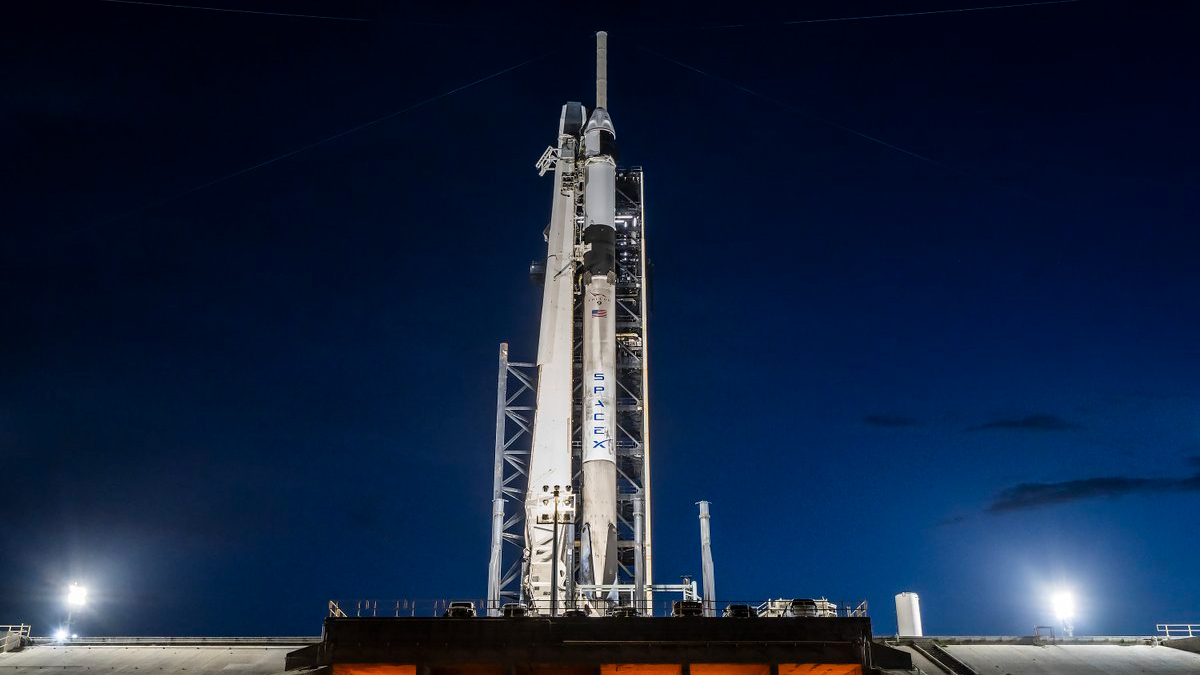How Boeing's Commercial CST-100 Starliner Spacecraft Works
Boeing's Commercial Spacecraft

The Boeing CST-100 Starliner is one of two commercial spacecraft types that NASA plans to use for International Space Station flights. (The other spacecraft is SpaceX's Dragon.) NASA currently uses Russian Soyuz spacecraft to ferry its astronauts into space, an arrangement that has persisted since the end of the space shuttle program in 2011.
Much of the development money for the Starliner came through various phases of NASA's commercial crew program, which aims to launch astronauts again from American soil. Boeing received $4.2 billion under the latest phase of the program — Commercial Crew Transportation Capability (CCtCap) — in September 2014. SpaceX got $2.6 billion at the same time.
Boeing has been a part of the United States space program since the very beginning, starting with developing the Mercury spacecraft in the early 1960s. Its current contributions to human spaceflight (besides Starliner) include the next-generation Space Launch System rocket to carry astronauts out of low Earth orbit, and serving as the prime integrator for the International Space Station.
Here's a brief overview of how the Starliner works.
Spacecraft size and astronauts
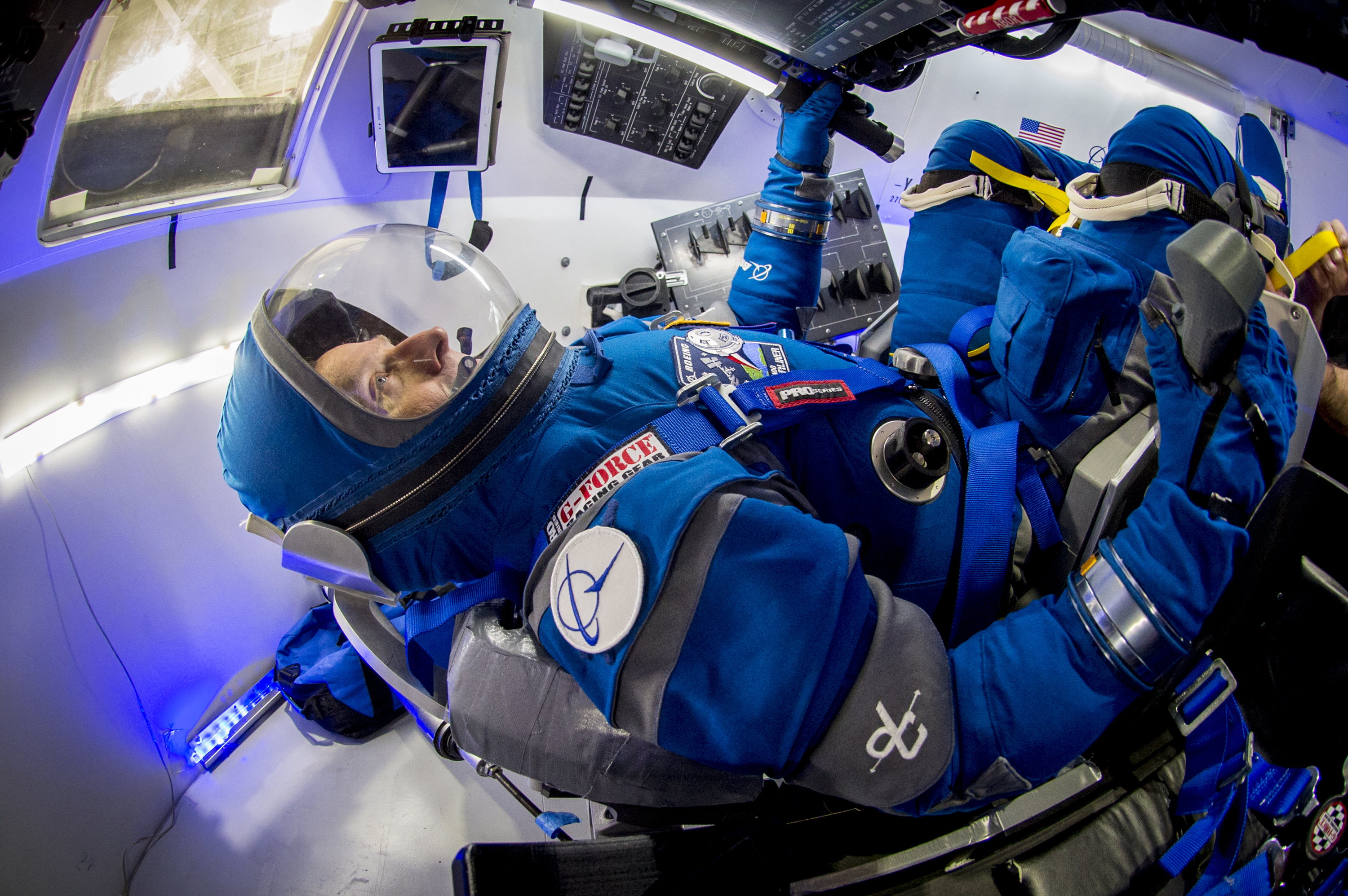
The Starliner is designed to fit up to seven astronauts, although the configuration could change depending on how much cargo the spacecraft would carry. The spacecraft even has wireless internet for crew communications and entertainment; the internet will also be useful when docking with the International Space Station, Boeing representatives have said.
Astronauts inside the spacecraft will wear Boeing blue spacesuits as they operate the controls. (Blue also happens to be a color Boeing uses in many of its designs, including elements of the spacecraft's interior.) Boeing's astronaut wear includes Reebok-inspired shoes, gloves that can manipulate touch screens, and a lighter and less bulky spacesuit designed for launch and re-entry.
The Starliner has a diameter of 15 feet (4.5 meters); a length of 16.5 feet (5 m), which includes the service module; and a volume of about 390 cubic feet (11 cubic md).
Atlas V rocket launcher
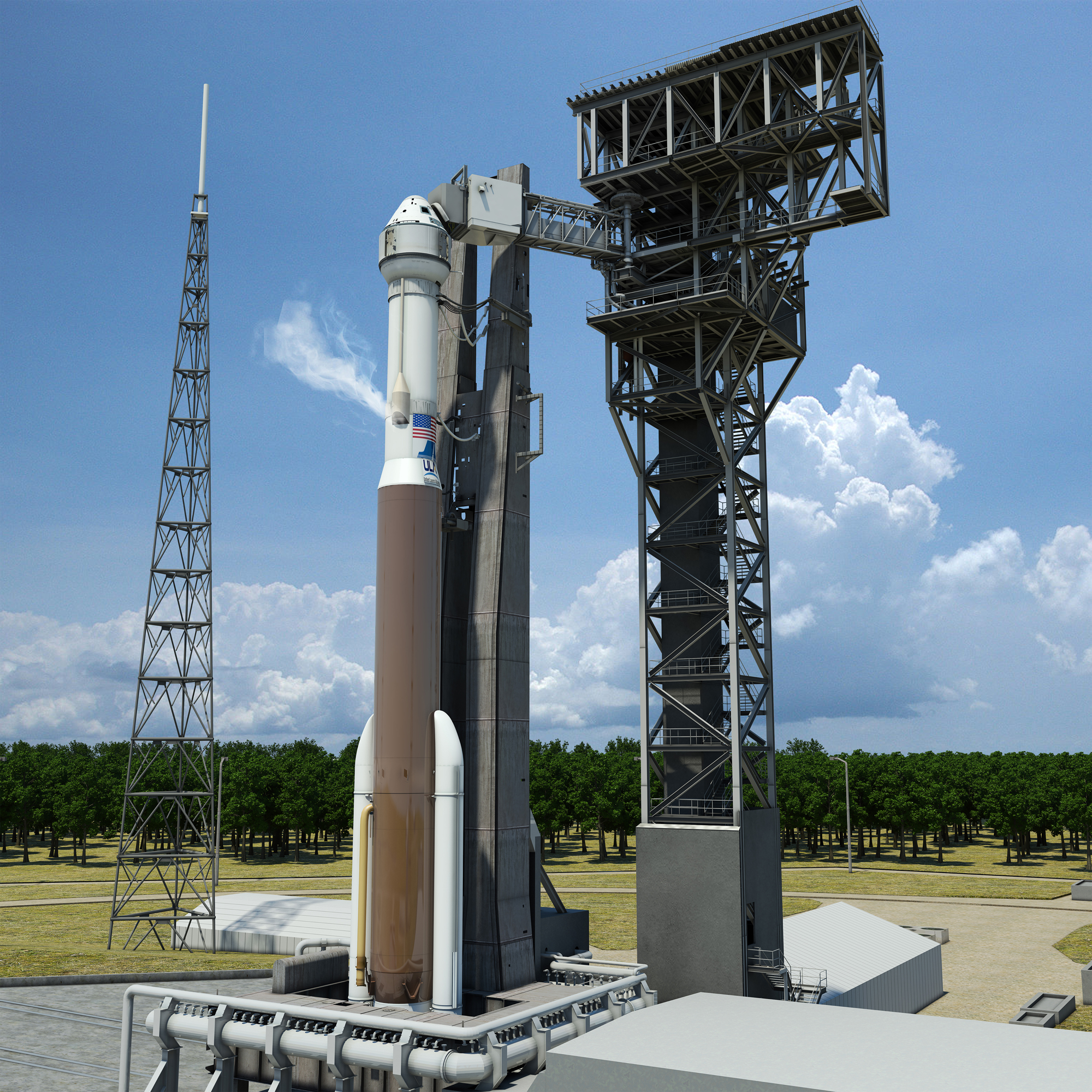
The Starliner's ride into space will be the Atlas V rocket, which has dozens of successful launches under its belt and no complete failures; that makes it the most reliable rocket type worldwide. Initially, the Atlas V was operated by Lockheed Martin, but now it is managed by a Boeing-Lockheed joint venture called United Launch Alliance.
The Atlas V has carried other precious cargo to space, although the Starliner will be its first to carry humans. Some of the Atlas V's past missions include the New Horizons probe that flew past Pluto, the Mars Curiosity rover and the mysterious X-37B military space plane. The rocket is 205 feet (62.5 m) tall and can carry up to 45,240 pounds (20,520 kg) to low Earth orbit. With the Starliner on board, the Atlas V will launch from Space Launch Complex 41 at Cape Canaveral Air Force Station in Florida
Operations on the International Space Station
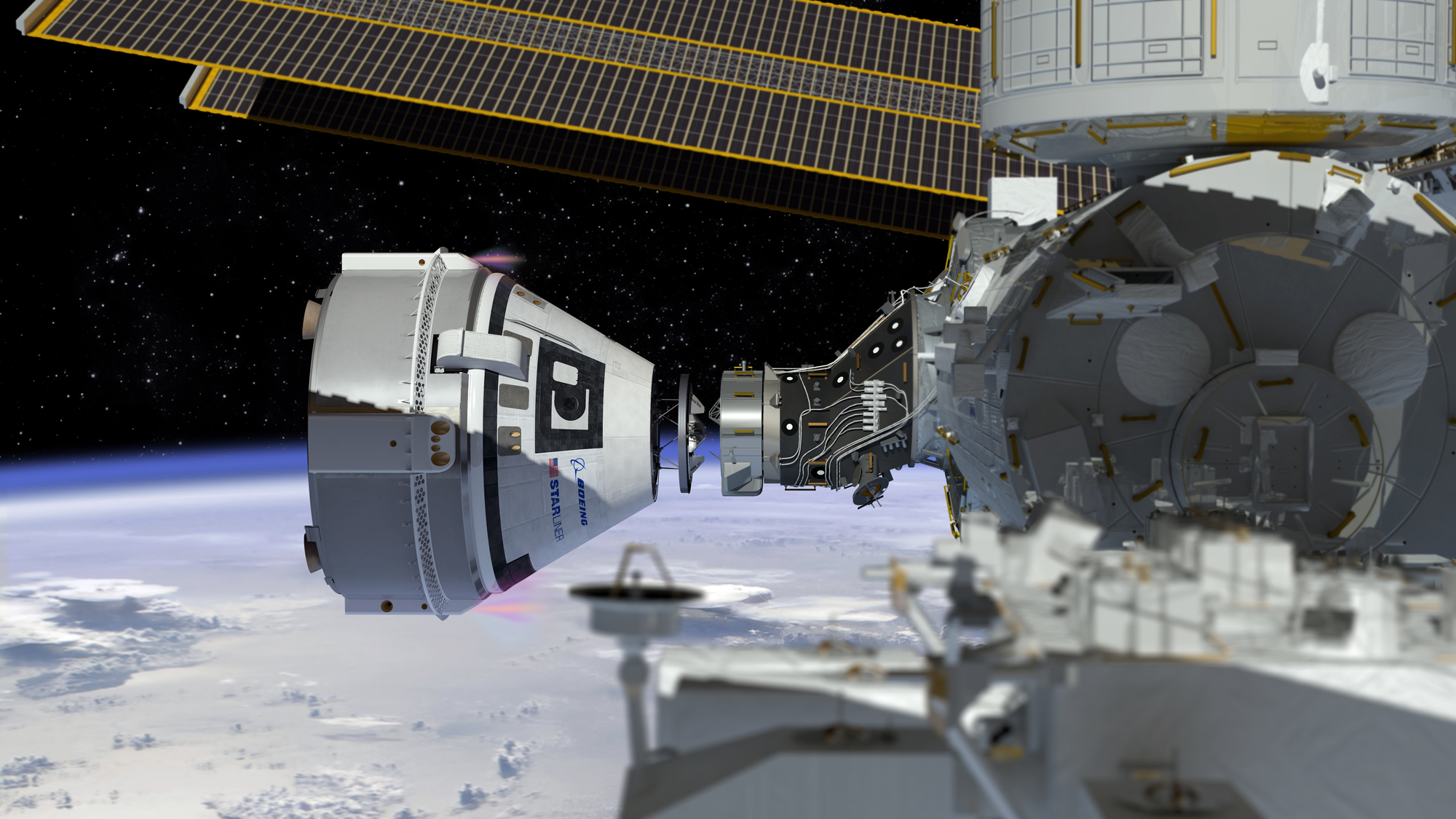
When the Starliner approaches the International Space Station, the docking will be fully autonomous as the spacecraft maneuvers toward an adapted docking port for commercial spacecraft. The idea is to free up astronauts for other things during the final approach to the space station. But in an emergency, the Starliner has backup manual controls for the pilot to steer the spacecraft to the station.
Once the Starliner is attached to the space station, it's designed to stay there for 210 days — ample time to allow for the usual crew stays of six months, or 180 days. Once it heads back to Earth, the spacecraft and its landing systems are fully reusable for another go into space, although the crew will need a fresh Atlas V rocket to take them there.
Emergency escape systems
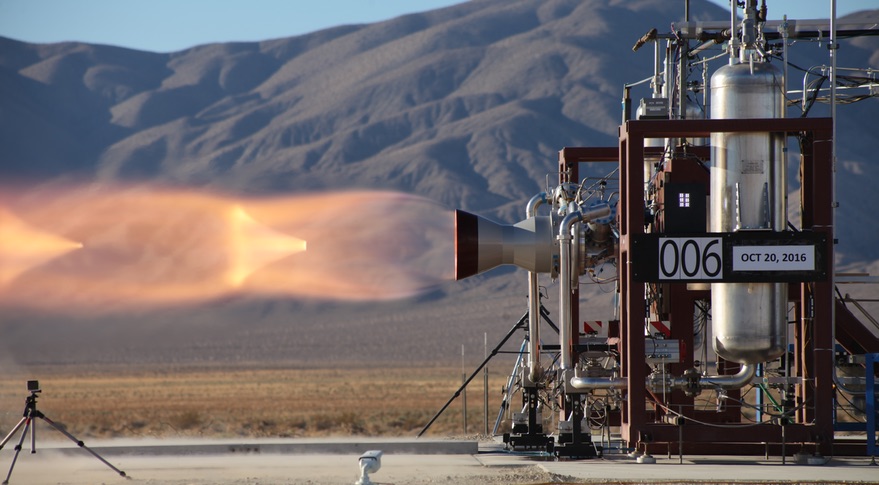
In an emergency, the Starliner will use abort engines developed by Aerojet Rocketdyne. Should something happen with the Atlas V rocket before or after the launch, the abort engines will fire and pull the astronauts away from the rocket. In some cases, the astronauts could also use zip lines to quickly move away from the rocket on the launch pad. The spacecraft is designed to make either a land or water landing; notably, its launchpad at Cape Canaveral is close to the Atlantic Ocean, so it's possible that the crew would end up there.
Like all astronaut crews, the people aboard Starliner will also have been extensively trained in emergency procedures. Astronauts spend a large amount of their training in simulators and in boardrooms, discussing emergencies and the best ways to deal with them. That way, if the unexpected arises during a flight, both astronauts and their ground-support crews know what to do.
Landing system
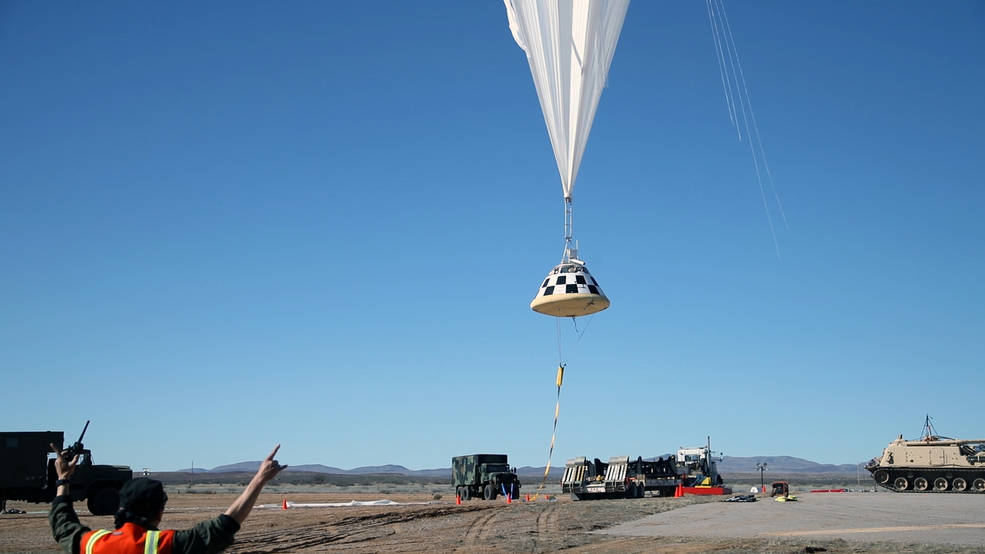
The Starliner has a standout feature from SpaceX's Dragon and the Apollo spacecraft that brought astronauts to the moon; it is designed to land on solid ground, using large air bags. If an emergency takes place, though, the spacecraft can splash down in the ocean, just like Apollo and Dragon.
A 2017 parachute test provides a sense of what a typical landing may look like, although the Starliner was tested under a weather balloon. It fell to the desert at a speed of 300 mph (480 km/h), until two drogue parachutes stabilized the spacecraft at 28,000 feet (8.5 km) in altitude. Then the spacecraft deployed pilot parachutes before deploying its three main parachutes at 8,000 feet (2.4 km). It also jettisoned its now-unneeded heat shield shortly afterward.
Other uses for Starliner
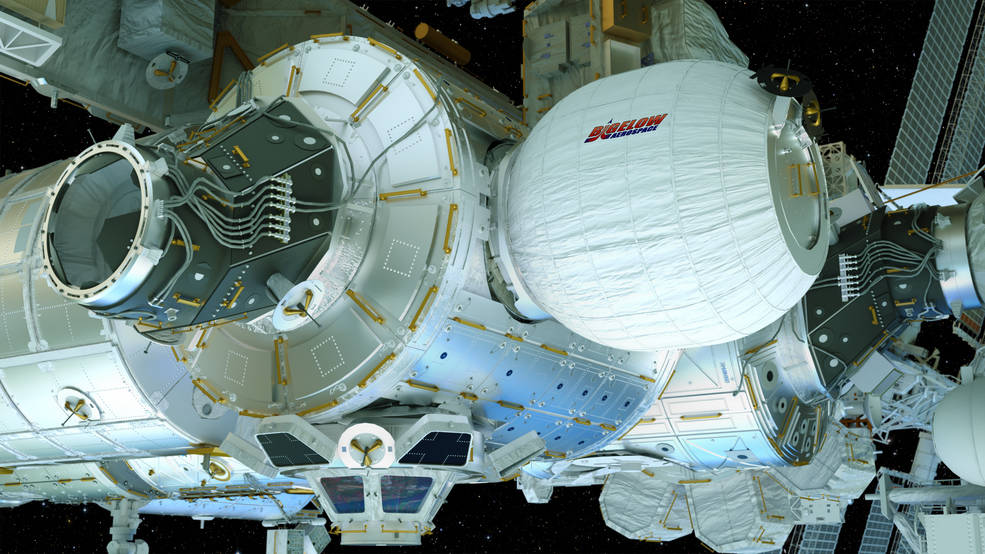
While NASA is the prime customer for the Starliner right now, it's possible the spacecraft could fly to other destinations besides the International Space Station. One possible destination is a future inflatable space station proposed by Bigelow, which has tested an inflatable module on board the International Space Station. Bigelow is assisting in Starliner's development.
In past years, Boeing said it is also working with space tourism company Space Adventures. In case there are unused seats on the CST-100, Boeing said at the time, it might make those spots available for paying tourist rides into low Earth orbit. It's unclear when this venture will come to fruition, however.
Boeing's joint venture company, United Launch Alliance, is providing launch services for the Starliner, as well as the zip lines that carry astronauts away from the rocket on the launchpad in an emergency.
Join our Space Forums to keep talking space on the latest missions, night sky and more! And if you have a news tip, correction or comment, let us know at: community@space.com.
Breaking space news, the latest updates on rocket launches, skywatching events and more!

Elizabeth Howell (she/her), Ph.D., was a staff writer in the spaceflight channel between 2022 and 2024 specializing in Canadian space news. She was contributing writer for Space.com for 10 years from 2012 to 2024. Elizabeth's reporting includes multiple exclusives with the White House, leading world coverage about a lost-and-found space tomato on the International Space Station, witnessing five human spaceflight launches on two continents, flying parabolic, working inside a spacesuit, and participating in a simulated Mars mission. Her latest book, "Why Am I Taller?" (ECW Press, 2022) is co-written with astronaut Dave Williams.
